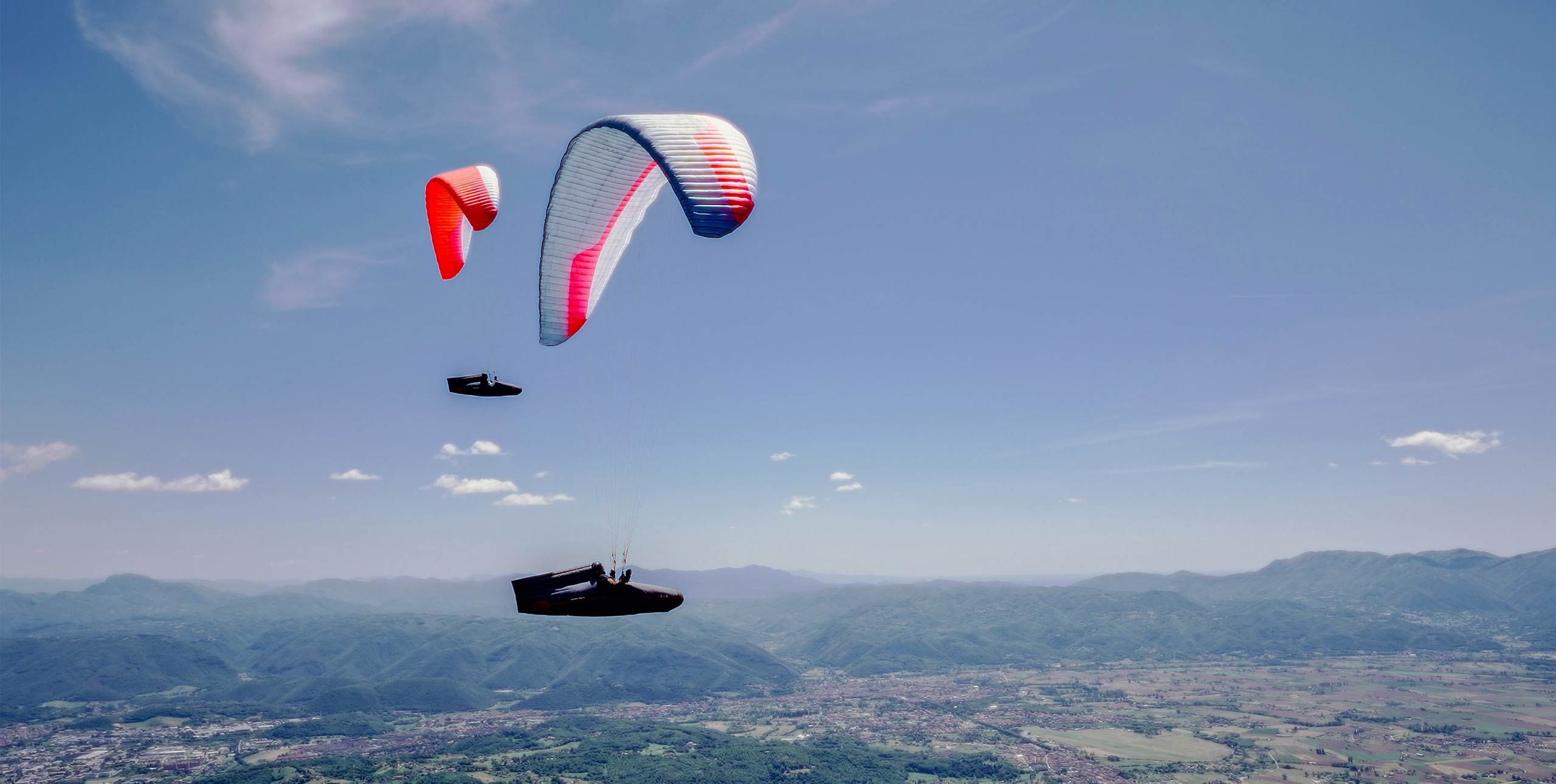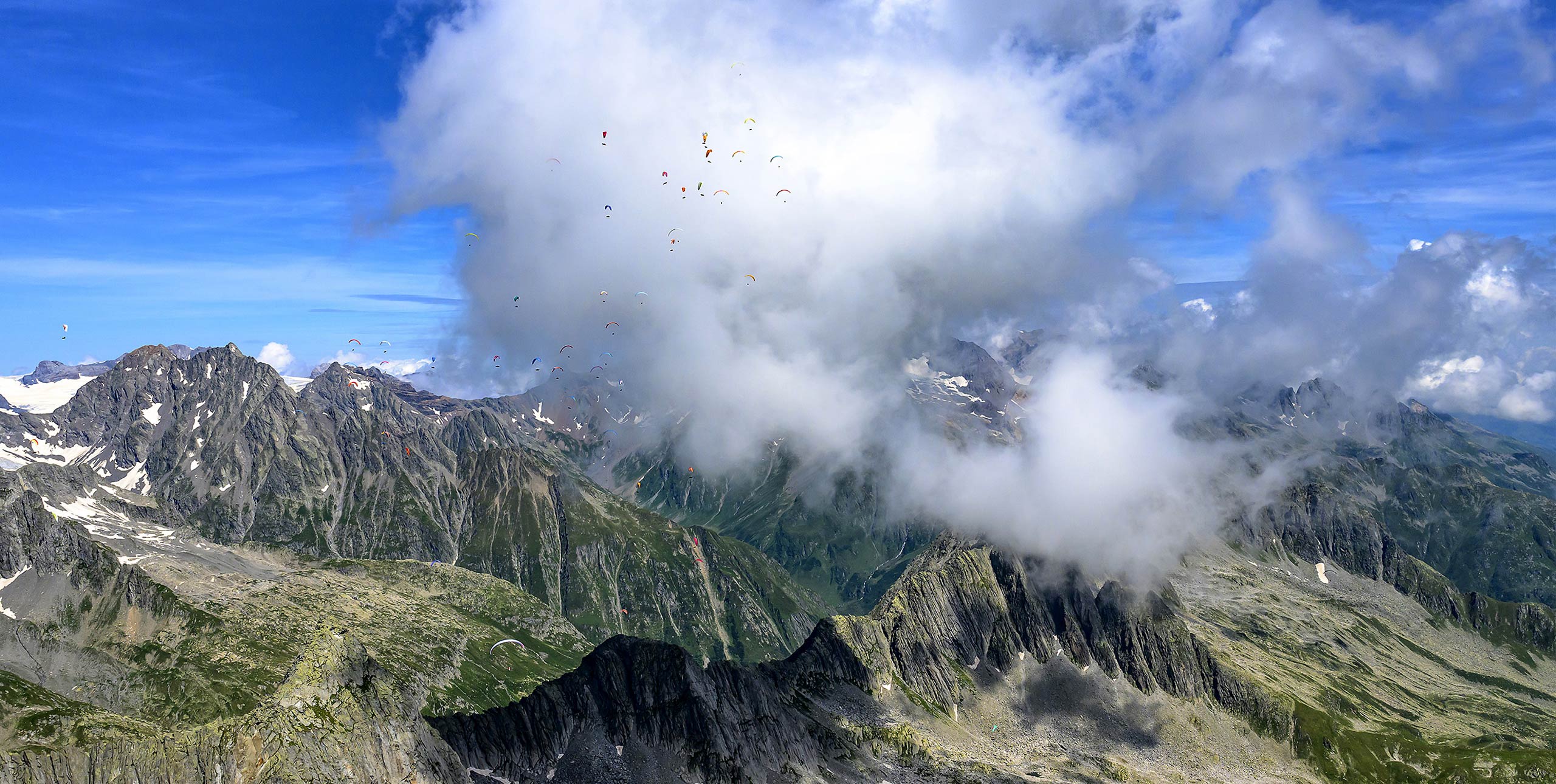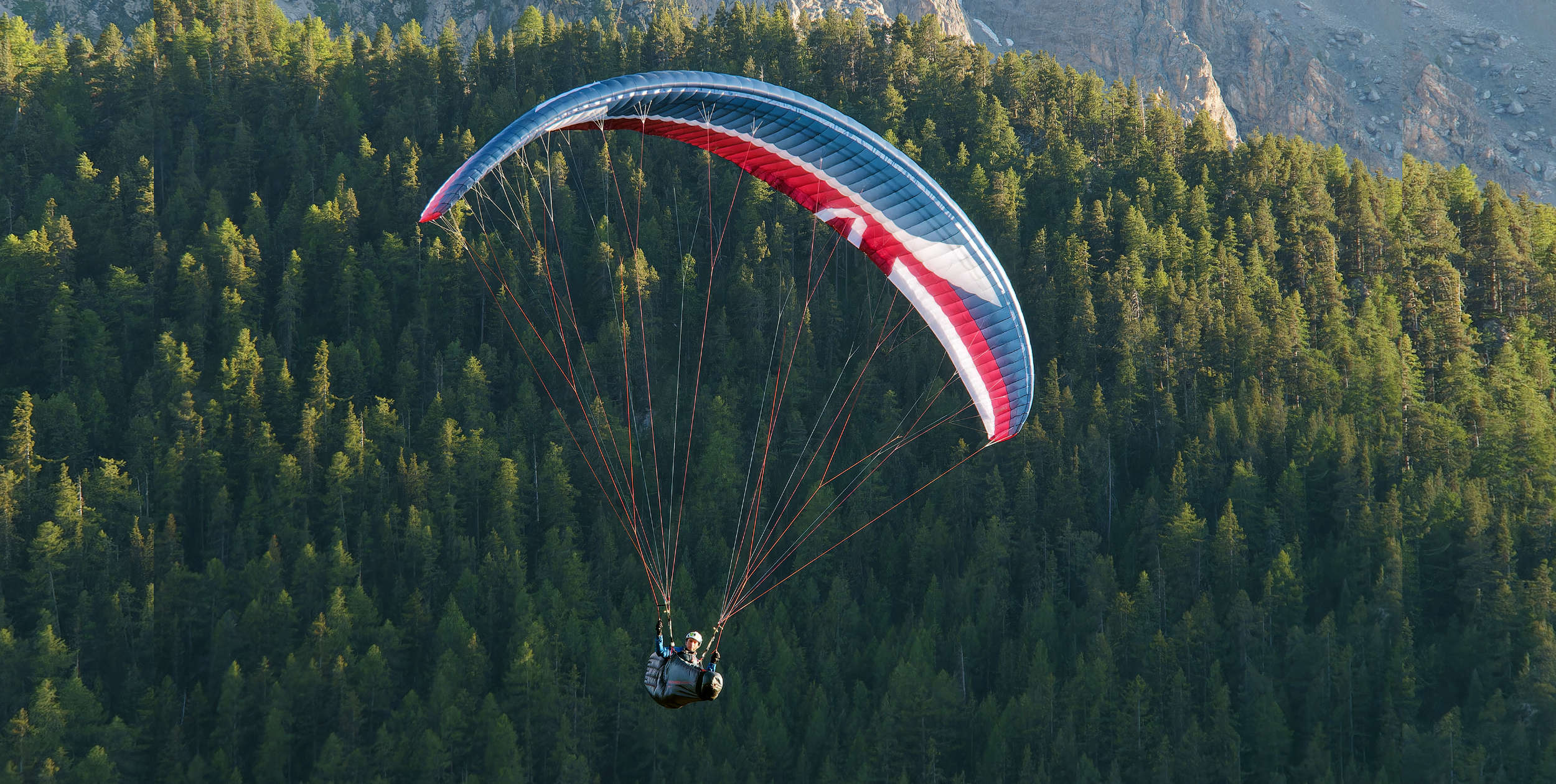
Skywalk’s fresh two-line Mint (EN C) has replaced their spicy Cayenne. Erwin Voogt serves up a taste of what the wing has to offer.
At the Stubai Cup in March last year many manufacturers introduced their new two-line EN-C with quite some fanfare. Not Skywalk. There were some rumours preceding the event but no high-profile launch and a visitor at the Austrian testival could easily have missed the news that Skywalk had also joined the two-line EN-C party.
I only had the one flight on the new Skywalk Mint at the festival, but the wing felt like a trusted friend from the first moment in the air. So I was happy when I got the opportunity to fly the Mint this summer for a long-term review.
Replacing the Cayenne
Most manufacturers who have introduced a two-line EN-C have positioned their glider as a step above their traditional three-line EN-C. For example, the Ozone Photon is above the Delta 4 in their range and pilot demand.
Skywalk’s Gerhard Holzner said that they too initially started the Mint project with the same assumption. But based on the experience they now have with the new wing they have changed their minds. “Several years ago we couldn´t imagine that a two-liner would one day fly so easily and turn so nicely,” he said. “But for us it is clear now, the Mint will replace the Cayenne.”
Such a move is clearly a big step for Skywalk – the Cayenne has been their EN-C glider for two decades. Although Gerhard could not give details yet, he also expects demand for a lightweight Mint.
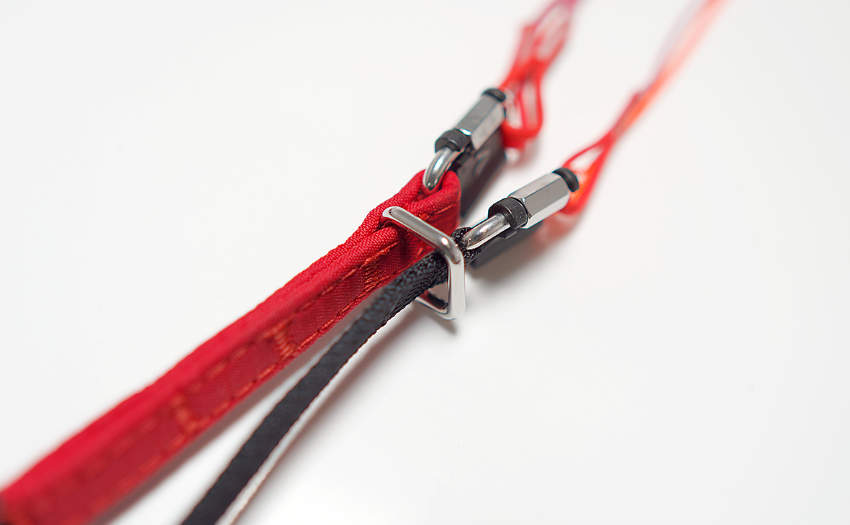
Collapse lines
For pilots there is at least one clear difference between three- and two-line wings: you can’t pull a collapse with two-liners without the help of folding lines. Therefore training collapse behaviour during an SIV requires installing these.
Skywalk does not include the folding lines with the wing; they must be ordered separately. Gerhard explained: “The assembly of the folding lines is quite complex, since in principle an additional line level is attached.
“Also, the handling at take-off and pre-launch preparations are quite complex for an average pilot, because the additional risers and lines can get tangled quite easily.”

Design and construction
The Mint arrived in an impressive concertina bag, or ‘guardbag’ as Skywalk call it. The material of the bag is far from lightweight and there is a thick patch to protect the nylon wires in the leading edge of the wing. The best description is sturdy. There is also an inflatable packing tube designed to prevent the wires in the wing from deforming.
The materials and construction of the wing and risers exude quality, as we expect from Skywalk. But unlike most wings from Skywalk, the Mint lacks the trademark Jet Flaps. “The construction of the Mint is quite complex”, Gerhard said. “If you add Jet Flaps it is super hard to get a nice shape in the trailing edge. This was also the reason why the X-Alps 5 didn’t have Jet Flaps.” He added, “For sure we still believe in the Jet Flap technology and it will always be used on wings up to the B-class.”
With ‘only’ 68 cells and a mild sharknose, the Mint’s leading edge looks less aggressive than some of its competitors. At 6.4 the aspect ratio is average for its class.
While both cell count and aspect ratio are comparable with the Cayenne 6 the wingloading, however, is somewhat higher on the Mint. And, of course, the total line length of the Mint is considerably less compared to the Cayenne 6: 215m instead of 278m for the same size. This results in a lighter wing: 4.6kg instead of 5.0kg for the size I flew. The weight range of the smallest size starts at 55kg, so the Mint is also available for light pilots.
The fabric used is Dominico TX Light, which Skywalk introduced with the Cayenne 6. It is very durable fabric developed for kites, which need to withstand salt, sand, water and sun.
The main lines are coloured but not sheathed. They are a mix of Kevlar and Dyneema (Edelrid 8001U and Liros PPSLS 125, DC 60 and 35). Skywalk advise a trim check after the first 25 flying hours. The B-lines have been equipped with an additional loop for easy correction. In the centre of the wing the As and Bs use four attachment points across the chord, just like other two-line EN-Cs.

A bonus of a two-liner is the simplicity of the risers. While the risers of some modern EN-Bs have evolved into Houdini-level puzzles, the risers of two-line EN-Cs, including the Mint’s, are a breeze. The risers of the Mint have nicely finished wooden rear-riser handles and adjustable steering handles that clip to the B-riser with a popper.
On launch
The Skywalk Mint launches surprisingly easily both in nil-wind and in strong wind. ‘Surprisingly’ because this is not always the case with sleek wings that have rods from leading edge to trailing edge.
In my experience, especially in nil-wind, the Mint is easier to launch than the Cayenne 6 and many other sports class wings. The wing has no tendency to overshoot and is easy to control once overhead, although it needs a dab of brake to prevent it flying away too fast. In strong wind the canopy rises gently without lifting the pilot.
I did a few hike-and-fly trips with the Mint and launched from places and in conditions far from ideal, but never regretted bringing the Mint (except for the weight of the guardbag).
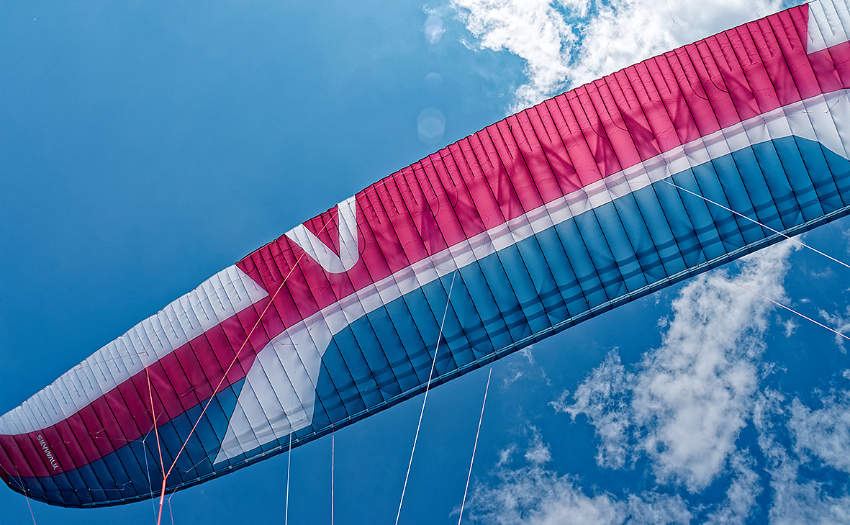
In the air
One day this summer I arrived in Brixen, Austria, late in the afternoon and decided to hike up to the launch of Westendorf. After a nil-wind forward launch I found a very light evening thermal. I expected nothing, but the Mint proved to be an excellent climber. After the initial centimetre-by-centimetre climb I found a stronger thermal near the top of the mountain which took me to cloudbase at 2,600m.
On other occasions and with other pilots, the Mint excelled in thermalling. Of course, just as with speed tests, it is difficult to quantitatively rate gliders, but I think the Mint climbs better and easier than most of the EN-Cs that flew around me.
The performance on bar is also impressive. Some rough measurements indicated a speed gain of about 17km/h, which is some 50% more than we measured with the Cayenne 6. Meanwhile the glide ratio remains very good, especially up to half bar. The travel to full bar is a bit long, at least compared to the three-line wings I normally fly. The rear-riser control while flying on bar is, as expected, fantastic and it is one of the things that make flying a two-liner addictive.
Does it come with a price? Barely. Of course, the Mint is for EN-C pilots, those who know how to fly a high aspect-ratio wing. The wing feels very solid and besides some rolling, it doesn’t move much.
Tips rarely lose pressure at the edges of thermals, and I didn’t have a single collapse during more than 500km flying at altitudes up to 4,000m. Some pilots might even find it too solid. Others might also find the brake pressure on the hard side, which initially gives the impression that the wing needs some convincing to turn sharply. This could become a bit tiring on very long flights. Using more weightshift helps.
Going down
There is no split-A for pulling big ears and Skywalk advises using the B3-lines instead. However, pulling normal big ears is no problem with the Mint and I personally found the normal big ears more useful in many cases.
You can regulate your descent rate precisely by pulling bigger or smaller ears, or by using just one ear. With the B3-lines this is not possible, they are binary: both in or both out. I see the B3-ears, which give a descent rate of about 4-5m/s, more as a replacement for the big big-ears. Spiral dives are well behaved and nothing to worry about with the Mint.
I would have liked to have tested collapses, but that was not possible. The argument that using the folding lines is not straightforward also means that some basic “know your wing” manoeuvres like collapses are not straightforward. And that’s the catch with this wing and probably also the other two-line EN-Cs. The Skywalk Mint is incredibly solid and it’s not too demanding for an EN-C. But what if? The EN-report causes no concern, but I would like to try myself. I always do. Time will tell if this is a non-issue or not.
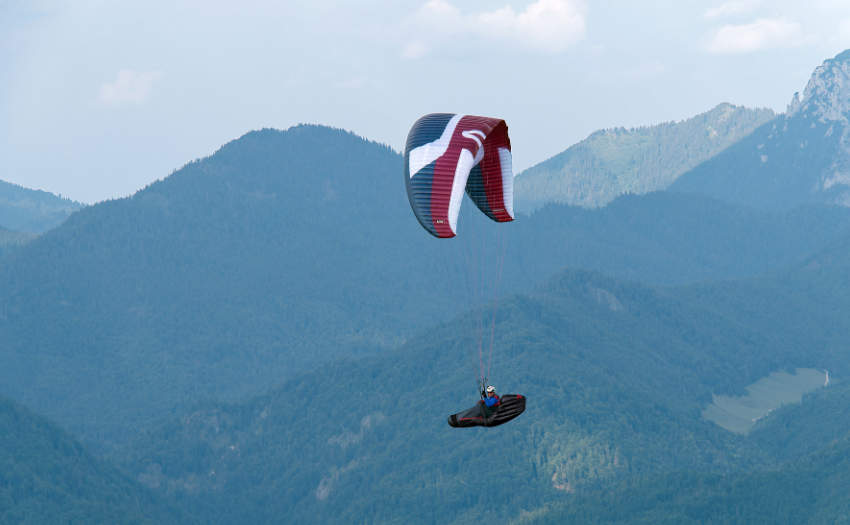
The verdict
The Skywalk Mint is a lovely wing. It really is a good example of the new two-line era in the EN-C sport class. It launches easier and flies better and faster than the traditional three-line Cayenne 6, for example.
Skywalk even state that the glider is suitable for experienced advanced pilots from the high-B class who fly their current equipment to its full capabilities, as well as for proven sport and competition pilots.
I can go with that, although especially for those who fly a Mint as their first EN-C, I would say book an SIV as soon as you get the glider. An experienced high-B pilot who had some flights with the Mint told me that it was quite a step up and a bit daunting to fly in thermic conditions at first, although launch, landing and flying felt really easy.
Pilots who are looking for a new EN-C or an update of their three-line EN-D, should definitely put the Skywalk Mint high on their list. I wouldn’t be surprised if Skywalk has a hit with the Mint.
Erwin Voogt has been flying paragliders since 2008 and is a paragliding instructor from the Netherlands. He flew the Skywalk Mint (95) in summer in Austria and France, paired with the Skywalk Range X-Alps 2 pod harness at an all-up weight of 85kg
Manufacturer’s Specifications
Skywalk say: “With the two-line Mint the performance leap from B to C class is defined even more clearly, opening up new horizons for the pilot”
Pilot level: Sports class pilots and above
Sizes: 75, 85, 95, 105, 115, 125
Certified take-off weight (kg): 55-75, 65-85, 75-95, 85-105, 95-115, 105-125
Flat area (m2): 20.26, 21.38, 22.70, 24.20, 25.67, 26.94
Glider weight (kg): 4.30, 4.45, 4.60, 4.80, 5.10, 5.30
Cells: 68
Flat aspect ratio: 6.4
Certification: EN-C
skywalk.info
Published in issue 244 (October 2023)


